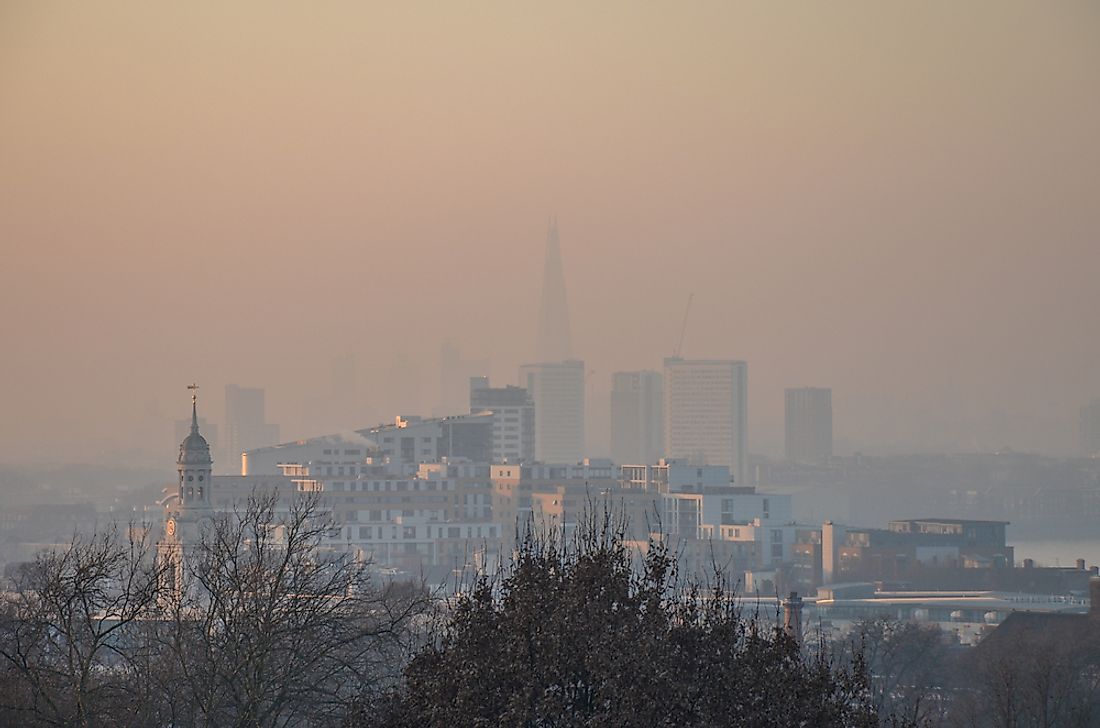What Causes Smog Days?

Introduction
Smog is a type of air pollutant. The word was coined in the early 20th century by Dr. Henry Antoine Des Voeux and is a combination of two words: smoke and fog. Smog is a form of air pollution produced by a photo-chemical reaction of sunlight with hydrocarbons and nitrogen oxides that have been released into the atmosphere. Photochemical refers to the chemical reaction of sunlight, nitrogen oxides and volatile organic compounds in the atmosphere, which leaves airborne particles and ground-level ozone.
Types of Smog
Smog can be classified into sulfur smog and photochemical smog. Sulfur smog is formed when there is an increased level of sulfur oxides in the atmosphere and photo chemical smog which is commonly formed in urban areas and originates from elevated levels of hydrocarbon vapors and nitrogen oxides in the presence of sunlight.
Main Causes of Smog
One of the major causes of smog is coal, which discharges high concentrations of sulfur oxides in the atmosphere. Vehicle and industrial emission is another cause, as combustion of fossil fuel in the locomotive machines contributes highly to smog formation. Natural causes such as volcanic eruption discharges high concentrations of sulfur dioxide and particulate matter in the air making it another cause of smog.
Effects of Smog
Smog has adverse effect on the health of both plants and animals, humans included.
Effects on Human Health
Asthma, chronic bronchitis, lung infections and cancers are some of adverse health effects of smog. The symptoms include coughing and irritation of the eyes, chest, nose and throat which leads to a sense of discomfort even when smog is not present in the air. In high concentrations, smog is known to irritate the human respiratory system which may lead to damaged lungs. In some instances, asthma attacks have been reported as a result of smog pollution.
Breathing difficulties and lung damage which include bronchitis, pneumonia and emphysema are common after harsh exposure to smog. These complications may lead to premature deaths. Thousands of deaths in Europe, Asia and the United states have been linked to effects of smog.
Birth defects and low birth weights can occur when expectant mothers are exposed to high levels of smog. Another effect is the risk of developing rickets (weakened bones) when there is heavy smog that lasts for prolonged periods. This is because it blocks sun rays from reaching the earth's surface, hence leading to low production of vitamin D which is responsible for the metabolism of Calcium and phosphorous in the bone marrow.
Implications in Plants and Animals
Smog slows growth of plants and can lead to extensive damage to crops, trees, and vegetation. When crops and vegetables such as grains, tomatoes and greens are exposed to smog, it interferes with their ability to fight infections thus increasing susceptibility to diseases.
Smog may also alter the natural environment making it difficult for animals to adapt or survive in such toxic conditions, which can lead to their decreased longevity.











